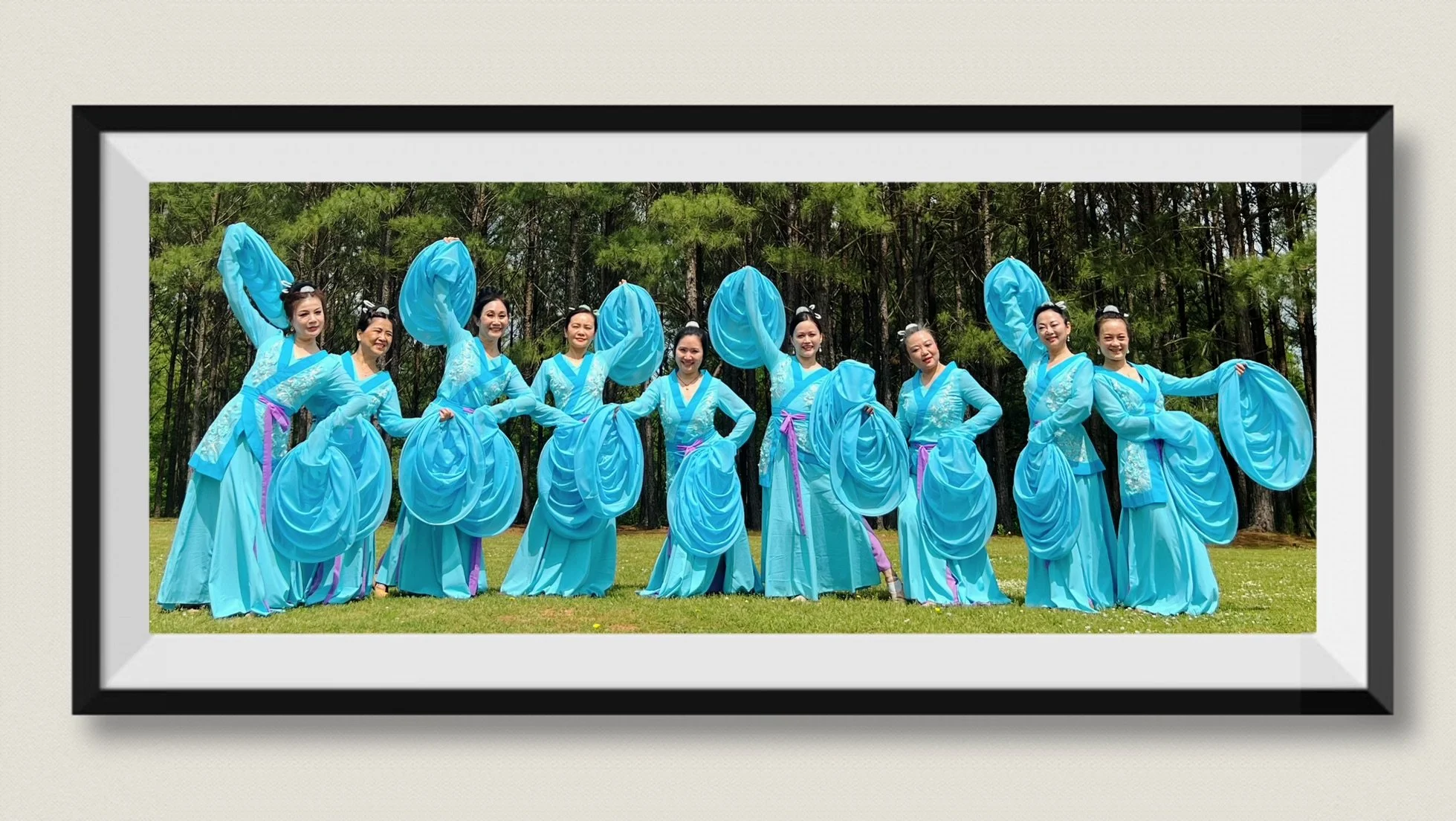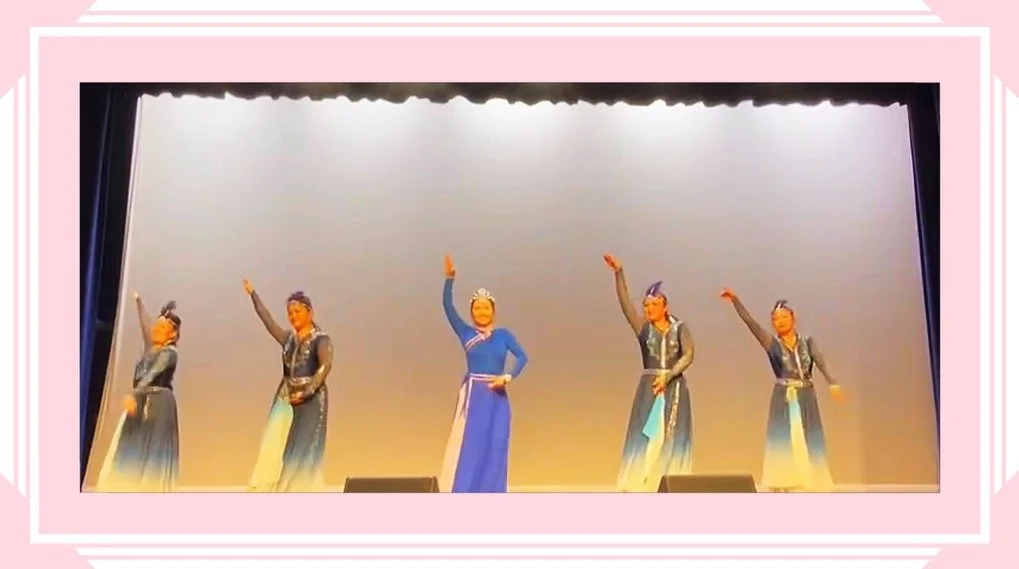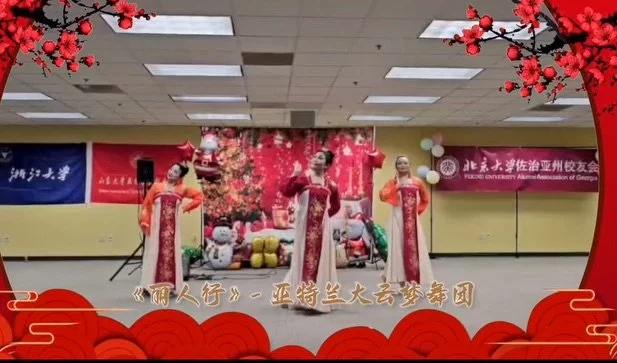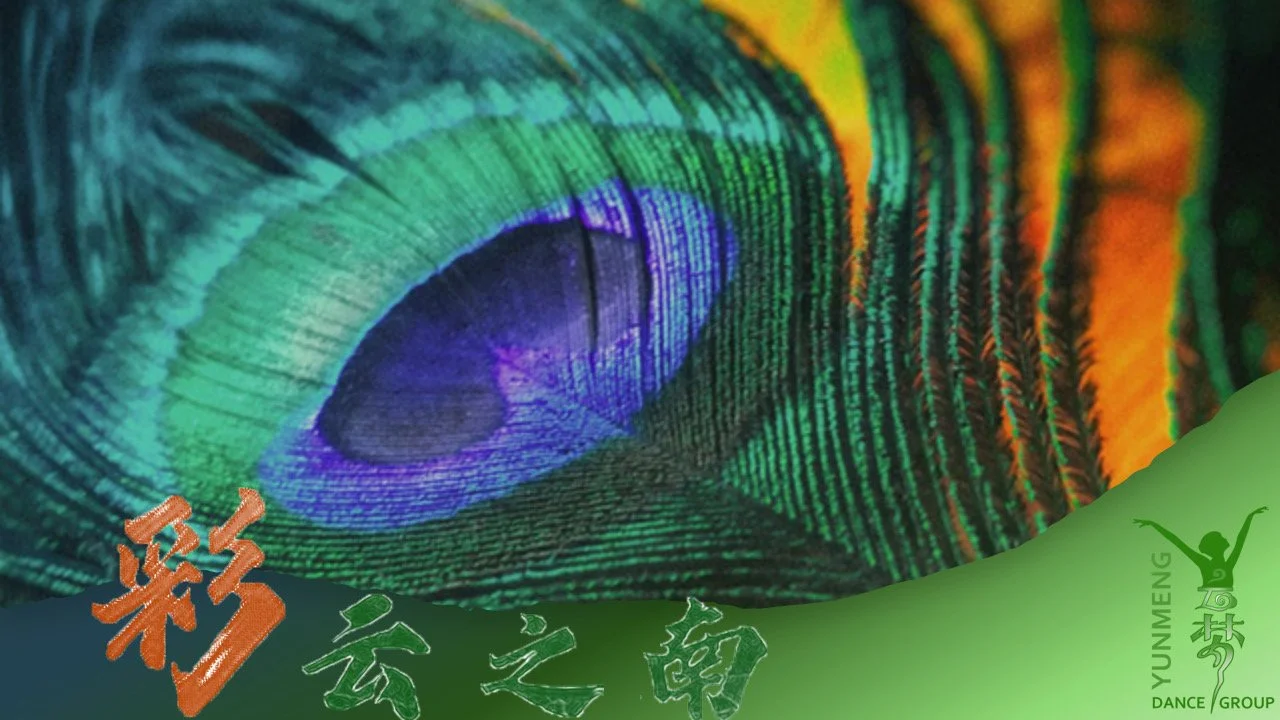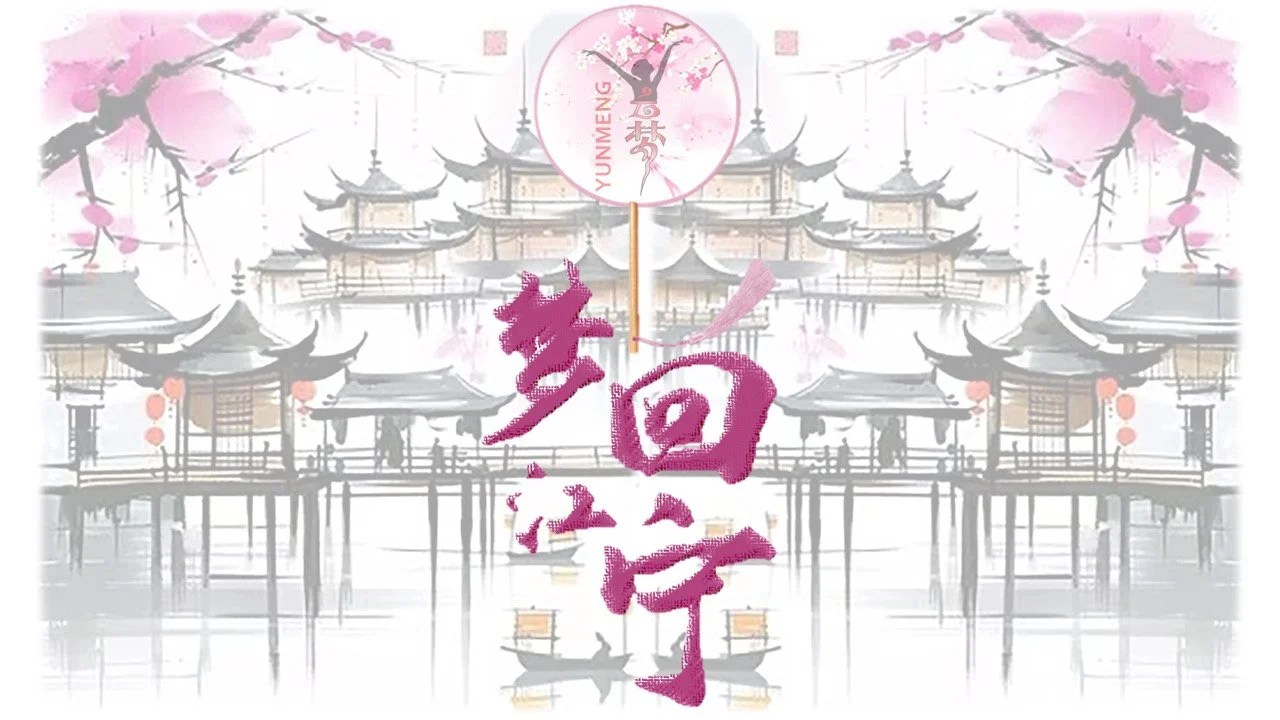The Dance of the mulan
象王行
“The Dance of Mulan” is inspired by the story of Hua Mulan. This dance combines elements of traditional Chinese culture, showcasing the resilience and wisdom of women. The flowing movements of the water sleeves are as continuous as flowing water and as sharp as a blade, symbolizing Mulan’s blend of softness and strength. Through each precise movement, the dancers intertwine Mulan’s battlefield bravery with her inner tenderness, portraying her steadfastness as a warrior and her grace as a woman. This performance vividly embodies the courage and strength to rise above adversity.
舞蹈 融合中国传统文化元素,以花木兰为灵感,展现了女性的坚韧与智慧。舞蹈中水袖的挥动如流水般绵延,又如刀锋般凌厉,象征着木兰柔中带刚的气质。舞者通过每一个精准的动作,将木兰在战场上的果敢与内心深处的柔情相互交织,展现出她作为战士的坚毅和作为女性的温润,生动诠释了在困境中挺身而出的勇气与坚强。
The jade dancer
瑶光赋
Two years of artistic innovation have awakened the Jade Dancer from a Han Tomb that had been sleeping for more than 2,000 years. Sizzling through the night like stars electrifying in the sky. The unique spinning sleeves were born carrying the emotions of the Jade Dancer into the starry night. That is the authenticity and simplicity of early Chinese aesthetics.
两年的艺术创新唤醒了沉睡了2000多年的汉墓中的玉舞者。她如夜空中闪耀的星辰,璀璨夺目。独特的陀螺袖子承载着玉舞者的情感,融入了星空的夜晚。这便是早期中国美学的真谛与简朴。
Galloping for love
四岁的海骝马
In the Mongolian prairies, horses at the age of hour are reaching maturity. For them there is no past, no future- only an exhilarating present, where love and freedom converge in beauty and passion. With muscles ripping beneath a sleek coat, they launch into a gallop, searching for that endless love.
A dancing cigarette box
烟盒舞
This lively cigarette box dance not only showcases the Yi culture’s are of hospitality and warm-heartedness but also incorporates elements of sending blessings.
Dancers gracefully hold exquisite cigarette boxes, using elegant movements and gestures to present them, all while skilfully incorporating the tiny cigarette box drum.
This petite instrument produces unique sounds that intertwine with the dance’s joyful rhythm. The audience will sense an atmosphere of celebration and well-wishing, as if they are included in a lively, music-filled festival.
This performace not only brings joy but alo conveys the Yi culture’s beautiful wishes for friendship and happiness, offering an unforgettable experience to the audience.
HOme in Colorful clouds
家住彩云间
This dance takes you into the world of the Yi people who reside amidst the breathtaking landscapes of Colorful Clouds. Majestic mountain ranges, lush green rice fields, and swift-flowing rivers become part of the stage. The dancers seem like an integral part of nature, their movements resembling the stars in the night sky, shimmering and playing the melody of life.
This dance is not only a visual spectacle but also a profound tribute to the stunning natural environment of the Yi people’s homeland, while also expressing deep respect for their millenia0old culture and heritage.
Points to moon 左手指月
The dance conveys profound themes of pursuing beauty and learning to safeguard the radiance of human nature amid an endless cycle. It reflects a yearning for goodness and beauty. This performance guides the audience to explore their aspirations for kindness and beauty. Despite the endless challenges in life, it reminds us that the inner light continues to shine through perpetual cycles.
Chinese fan dance has continuously evolved and innovated, incorporating numerous elements from traditional Chinese opera. One such innovation is the ‘Long Silk Fan Dance’, which draws inspiration of water sleeves in classical Chinese opera. In this dance form, performers use specially designed long silk fans to mimic the flowing effect of water sleeves, infusing the dance with elements of drama and elegance. It not only showcases the charm and grace of the fans but also captures the essence of traditional Chinese opera.
The tambourine
上铃鼓
This lively Western-style upper ring drum dance fills with joy and energy. Dancers vividly depict the Western regions’ culture through joyful movements and expressions, harmonizing with the energetic drum beats. Join us for a spirited journey celebrating the charm and vibrancy of the Western Regions.
The buried heart
葬心
This classical, poignant dance is inspired by the story of the legendary Chinese actress Ruan Lingyu. Dressed in exquisite qipao dresses and accompanied by classical music, the dancers showcase Ruan Lingyu’s resilience and courage through their exquisite dance skills and emotional expression. This performance inspires the audience to pursue their dreams, overcome challenges, and stay true to their inner beliefs. It is a deeply inspiring dance presentation.
The butterfly lovers
梁祝
Known as the Chinese “ Romeo and Juliet,” “ The Butterfly Lovers” is a traditional Chinese folk tale- recounting the story of two young lovers, Liang Shanbo and Zhu Yingtai, who strived to be together in life, but failed. Instead, they become two butterflies to stay with one another for eternity. This dance weaves an enchanting tale of love and timeless legend in the Chinese way.
Big Fish & Begonia
大鱼海棠
This dance is inspired by ideas and stories in the first chapter of the book Zhuangzi, which is an ancient Chinese Daoism classic. The dance is to express “ Life is short, so you might as well be bold, climb a mountain, and chase a dream.”
The dance is based on Chinese classical dance and incorporates modern dance elements. It integrates every breath into the dance movements ot show the beautiful dance posture and the charm of Chinese classical dance.
Classical Chinese dance is rooted in five millennia of Chinese civilization. Classical Chinese dance has three main components that the dancers focus on during training. They are technical skill, form, and bearing. “Form” is a system of numerous distinctly Chinese movements and postures. The most important part of the training is “bearing”, or in Chinese- yun. Yun is the inner feeling behind a movement. It is deeply connected to the dancer’s breathing and state of mind, and uniquely reflects a performer’s personality. Classical Chinese dance emphasizes movements that are round and continuous.
Dance Blossoms
繁花
This classical Chinese dance expresses warmth and affection. Over hills, over vales, lands full of peach trees parade acres of peach blossoms, radiant and sweet.
The Goddess Angel
次真拉姆
Tibetan is one of the 56 ethnic groups in China with a relatively large population and a wide geographical distribution. Dancing is a very important part of Tibetan culture. It is through dance and song that people express their happiness and gratitude for the good things in life. This dance is to wish we all can find peace and purity deep inside.
Beauty Walk
丽人行
“Beauty’s Walk” is an ancient Tang costume group dance. It originates from the poem “ Beauty’s Walk” by Du Fu, a great poet of the Tang Dynasty. This dance describes the beauty of the body and the splendor of ladies' costumes on spring outings. It also depicts the leisurely and romantic feminity of the palace ladies of the Tang Dynasty.

